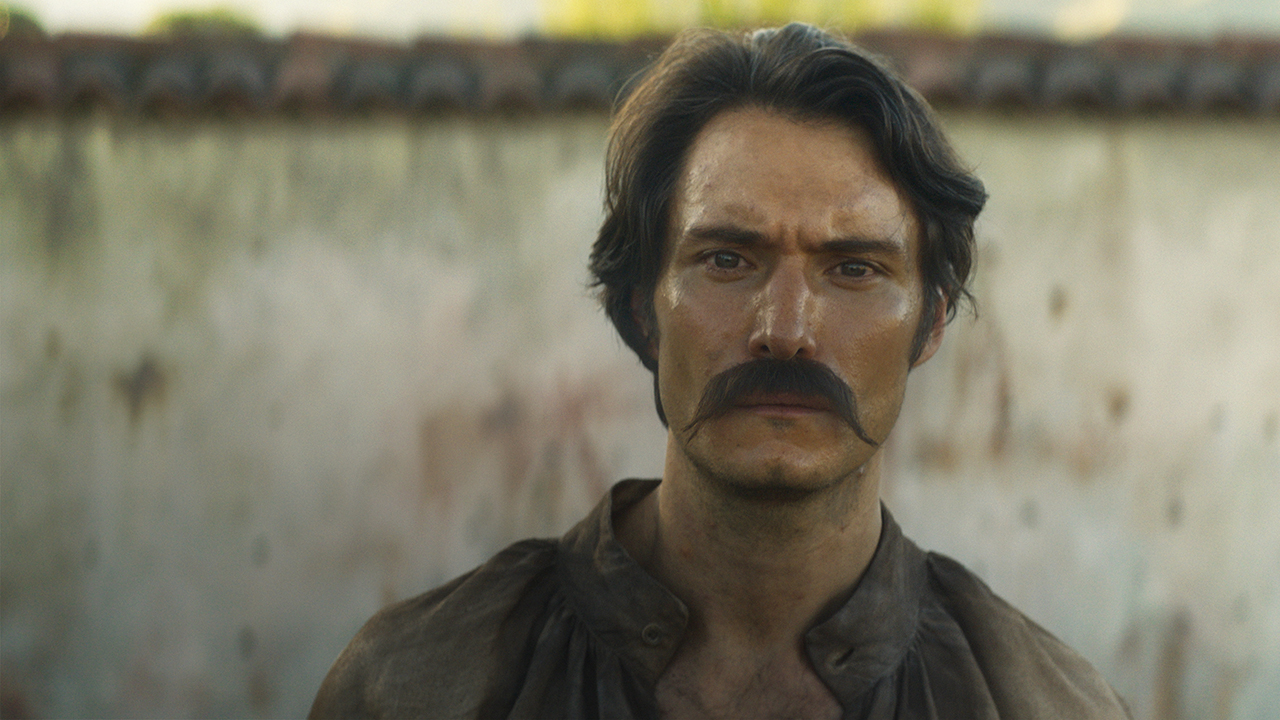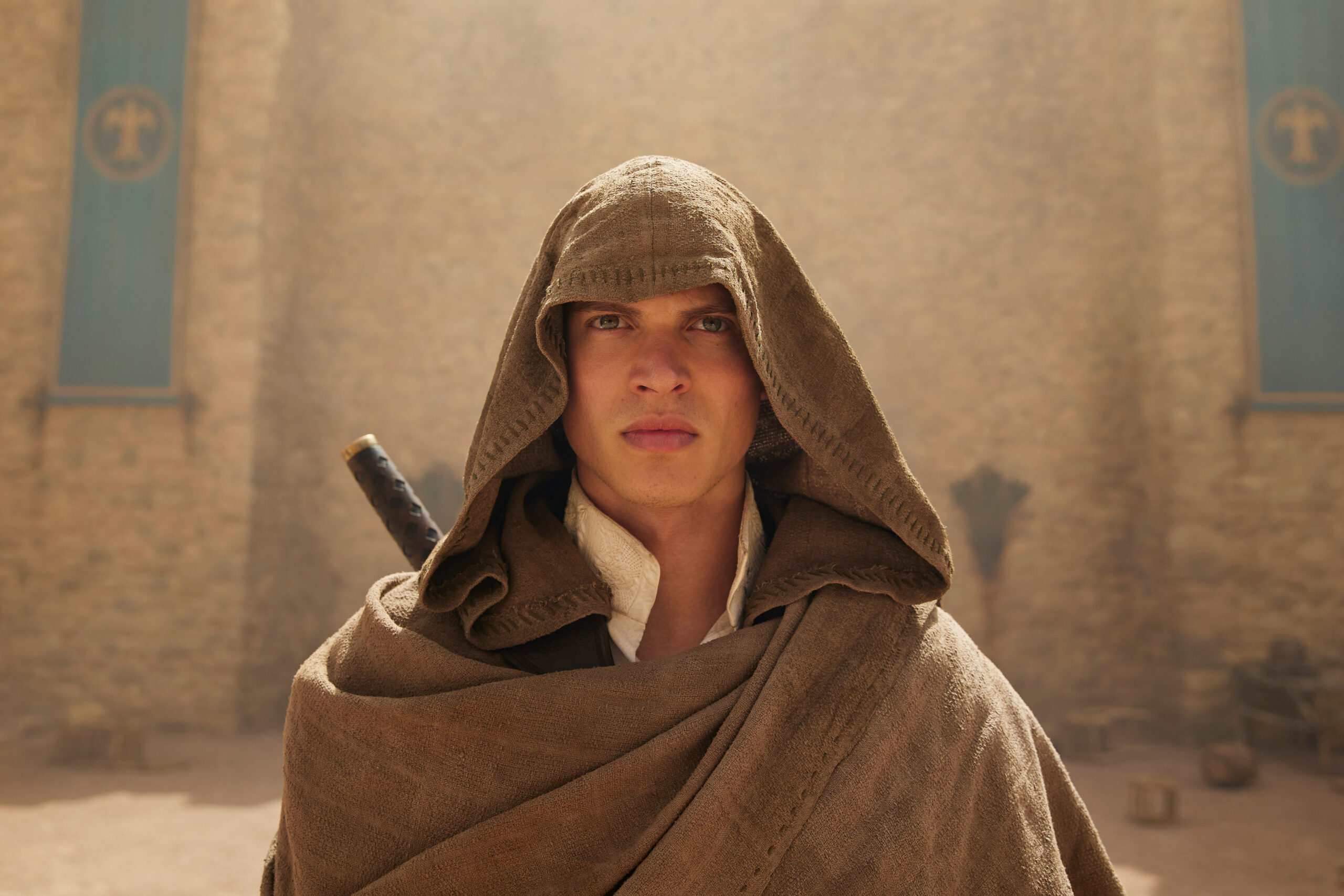
Earlier this month, I had the great pleasure to head over to Pixar Animation Studios, where they’re hard at work finishing up their next feature film, Coco. Of course, as with most of their films, Pixar likes to push themselves in new and exciting directions. With Toy Story, they pioneered the computer animation technology, with A Bug’s Life, they brought more organic forms to life, and with Monster’s Inc, they pushed the envelope in terms of the different types of creatures they brought to the screen. With almost every film, you can seem the stretch themselves more and more as a creative entity.
This is a tradition that continues with Coco. For those who don’t know, Coco is their latest movie that will take audiences into Mexico and explore the holiday that is Día de los Muertos — or Day of the Dead. This will be Pixar’s first film with a Mexican-based story and protagonist, and furthermore, it features an all-Latino cast, which is a move we applaud here at LRM.
So far, audiences have had a teaser, a trailer, and a short featuring the hairless dog, Dante. Spanish-speaking audiences have also had the opportunity to see another trailer that really delves into what Coco is about. But for those who don’t speak Spanish, and are still wondering why this movie is special, we’ve got your back.
As mentioned above, Pixar was kind enough to invite us to their lovely air hangar of a studio. While there, we got to see the first 35 minutes of the film, and get an in-depth look at their process behind the scenes, their mindset when making this story, and what makes this a special project for Pixar.
Today, we’ll be giving you a first taste of what we had a chance to see, starting with some highlights of what we had a chance to see. Don’t think this will be the end of our coverage, though. While there, we saw a ridiculous amount of stuff, so keep an eye out here between now and November to see some of the details we learned while attending the press day.
So without further ado, here are 10 things we learned about Coco from our visit to Pixar.
1. No, This Isn’t A Book of Life Ripoff

I feel like this is something that goes without saying, but upon the first trailer hitting, there was an interesting undercurrent online regarding this film and 2014’s The Book of Life. While Coco looked like a great visual masterpiece — as we’d come to expect from Pixar — there were plenty of people quick to bring up The Book of Life, hinting that this was a retread of that animated film from Jorge Gutierrez.
You’d be surprised the number of people I saw saying something along the lines of “I’ve seen a movie about Day of the Dead. It’s called The Book of Life.” Believe it or not, like films about Halloween or Christmas, we are allowed to have more than one animated film about the Day of the Dead. That being said, with the visual aesthetic of both films both sharing similar inspirations — as well as the films both focusing on musicians — you’d be forgiven if that thought crossed your mind at least once.
While I won’t give any details away, I can say — based on seeing The Book of Life and the first 35 minutes of Coco — these two movies are very different beasts, despite involving the same holiday.
2. Coco’s Main Character, Miguel, Has A Dream, And His Family Is Not On Board With It

Miguel’s family has a bad history with musicians. His great-great-grandmother Mamá Imelda once fell in love with a musician and the pair gave birth to his great-grandmother Mamá Coco. However, his great-great-grandfather had another love in music, and ran off to play music around the country. They never saw him again, and from that day forward, Mamá Imelda instilled a hatred of music to all members of her family.
Mamá Imelda then learned the trade of making shoes, and passed the trade onto her kids, her grandkids, and great-grandkids. Furthermore, she enforced a generations-long ban on music, one that all members of the family have been all too happy to keep up.

But Miguel is different. Miguel has been inspired by the musical stylings of one Ernesto de la Cruz, and like Cruz, feels the music inside him.
“Miguel feels like he has to choose between hi passion for music and his love for his family,” says co-director Adrian Molina. “He really wants to share his talents with his family — to prove to them that making music both beautiful and honorable. But he goes about it the wrong way.”
This “wrong way” is an action (which we won’t spoil) that catapults him into the Land of the Dead, where he stumbles upon generations of dead folk — including members of his own family.
3. Coco Focuses on Multiple Generations of a Family

In case it wasn’t clear at this point, Coco is a story that has its grounding in the concept of family. In the first 35 minutes of the film alone, we meet the likes of Miguel’s mamá, papá, tío, abuelita, great-grandmother, and many others that are hard to remember. But that’s not it. Once he ventures into the Land of the Dead, we meet his great-great grandmother, great-grandfather, tía, and tíos. Needless to say, we meet more than a couple handfuls of Miguel’s family (as someone who grew up in a Mexican-American family where family reunions were exhausting, since I had no idea who 70 percent of my family was, I appreciated that).
While the story itself revolves around Miguel, his dream to play music, despite protests from his family, it ultimately is a story about the importance of family. In true Mexican spirit, this family does not just include those still living, but also those who have since passed on. With that and mind — and their ability to actually venture into the Land of the Dead — this is a movie that could truly be described as a multi-generational tale.
4. The Characters Designers Were Worried About Creating Skeletons That Were Too Scary

With Miguel venturing into the Land of the Dead, we’re bound to see a lot of…dead people. Obviously, being a family film, they don’t want these guys to look horrific — but we don’t want the idea of them being dead to be lost on viewers either. It’s with that in mind that the character designers and animators were tasked with a way to portray the dead ancestors in their skeletal forms.
This seems simple enough, but when trying to make this accessible, it’s a task that has some potentially unforeseen issues.
“The skeletons for us where a huge challenge at Pixar for many reasons,” character art director Daniel Arriaga says. “One of the main reasons is, they’re very scary. If I saw that talking, I’d want to scream, right? Our first thing to do at Pixar, designing anything, as it goes throughout the process is we’re always getting a bunch of reference. So in this case, we had to study the skeleton and we had to figure out what we wanted to use from it as is and embrace it, but what changes could we make to it to make it more appealing?”
They went through many iterations before settling on what we see on screen, but part of what they did to accomplish this lied in allowing many more “fleshy” traits to actually be portrayed on the skeleton. For example, allowing the mouth of the skulls to act more like mouths on a normal face than that of an actual skull.
5. There’s a Good Amount Of Spanish, But They Were Careful About When To Incorporate It

Going into a film like this, one has to wonder if they plan on incorporating Spanish into it. After all, it is a film that takes place in Mexico, and Spanish is actually a language that permeates the culture of many parts of America, so unlike other languages, they may be able to actually get away with including a good amount of Spanglish. Would Pixar have the confidence to not only have the characters speak Spanish, but also allow it to go untranslated either in dialogue or subtitles?
The answer was yes. The folks over at Pixar are more than aware of all of this, and they were more than willing to incorporate more Spanglish elements into the film. In addition to relationships like “tío,” and “abuelita” being implemented into the film, there are a good number of other instances where the characters would transition into Spanish, but they were careful about how they did it. The directors wanted to make sure that if they implemented Spanish phrases that based on the context, non-Spanish-speaking audiences would be able to get a gist of what they meant.
They also allowed their all-Latino cast to improvize. Co-director Adrian Molina stated that while they’d have a line on the page for them to read, if there was another Spanish line that felt more natural to whatever actor was a in the booth, that they’d allow them to go with it.
They also had a rule about the signage seen in the film.
The film takes place in the fictional Mexican town of Santa Cecilia. As one would expect in a Mexican town, they allowed the majority of the signs to be in Spanish. the only signs that will be in English for American audiences will be those that are crucial to the plot, which seems like a logical way to split the difference.
6. The Land of the Dead Itself Was Not Based On Anything From Día de los Muertos
Like a good number of other cultures out there, us Mexicans have very little idea of what to expect in the afterlife. Most of the way we live is based on faith that one exists, and that is beautiful, but as far as real tangible elements go, those are better left up to the imagination. As such, Pixar didn’t necessarily have any Mexican mythology on which they could base their Land of the Dead on.
Instead, the studio turned their eyes to the real-life city of Guanajuato.
“It’s a multi-layered and brightly-colored city filled with narrow stairways and bridges arranged vertically up steep hillsides,” production designer Harley Jessup says. “Underneath it all runs a network of tunnels. There’s really a layering of history that was inspiring to us.”
Taking a look at photos of the Mexican city alongside an image of the Land of the Dead, it’s easy to see the resemblance. But speaking of “layering,” let’s talk about the layers.
7. The Land of the Dead Has Layers Of History To It

We mentioned the layers of the Land of the Dead already, but they’re there for more than just appearances. They also serve a bit of a world-building function. If you imagine the Land of the Dead as more of a traditional “living” city, you would expect that most of its residents would start out living at ground level.
As the years go on and more generations of family pass on to the Land of the Dead, they begin to build upward. As such, each layer is filled history, and shows different aspects of newer culture as you get higher and higher up. This helps make the world feel more real than your average “fantasy world.” If you look at the top of the image above, for example, you’ll notice some cranes at the top that are in the process of constructing a new level.
Though while they did want some historical grounding to this world, they still wanted it to feel distinct, and the layers certainly helped to differentiate it from the living world, which is more characterized as “horizontal” in nature. So while the living world is more flat and low to the ground, the Land of the Dead is vertical in nature.
8. They Didn’t Want To Fill The Land of the Dead With a Bunch of Gags
Animators love making jokes. If you’ve seen any American animated film ever, it’s easy to see. They not only have a lot of fun creating these unique worlds, but they love poking fun whenever they can. It’s part of the job show audiences new things, all while giving them other things to connect to.
It’s why in a great number of animated films that we get all sorts of pop culture references or allusions to real-world brands like Starbucks. However, while you can expect to see a real grounding of the Land of the Dead — which features something a “Victorian DMV” — don’t expect a lot of tongue-in-cheek references to our world.
Pixar was adamant about not filling the Land of the Dead with gags. It’d be an easy way to get some laughs, but there sadly is no coffee shop called Starbones, and no rapper named Wiz Skullifa (okay they wouldn’t have a rapper, but hopefully you get the idea). While they wanted the world to be fun, they didn’t want it to feel too much like our own, nor did they want to cheapen the timeless elements with silly jokes.
9. Director Lee Unkrich Was Very Conscious About Taking On A Latino-Focused Story

Of course, when signing on to bring to life a culture that is no one’s own, there is bound to be a lot of pressure. While Toy Story 3 director Lee Unkrich had Latino co-director Adrian Molina with him, he definitely felt the weight of the responsibility in tackling this movie, as a white man. In today’s politically correct environment, that’s especially important. He fully acknowledged this.
“I’m not Latino, and I never will be Latino, I just can’t change that,” Unkrich says. “But I comfort myself in knowing that there have been a lot of great films made over time by filmmakers that were not of the cultures they were making films about. I took the responsibility very seriously, and it’s been great having [co-director Adrian Molina] at my side, and all of the cultural consultants we’ve gathered, and the many Latino members of our crew that have been a part of this for a long time. If we have any missteps, it’s not for a lack of trying.”
So adamant were they about getting this right that they invited their cultural consultants — along with many big figures in the Latino community to see early cuts of the film. Usually with a studio like Pixar, they keep their hand pretty close to their chest, but in this instance, they felt the need to show it to outsiders much earlier on, so that they had enough time to get it right.
One instance in which this was helpful was in the character of Abuelita, who originally carried around a wooden spoon in her belt that she’d smack people with. One of the consultants was quick to point out that, “no, no, no, no, it has to be her chancla,” or sandal.
10. Yes, this Movie Will Feature John Ratzenberger
Pixar fans will know that actor John Ratzenberger is something of a good luck charm for the studio. He’s been in every film they’ve produced so far, and is seen as a staple in all their productions. Despite Coco featuring an all-Latino cast, directors Lee Unkrich and Adrian Molina felt the pressure to include Ratzenberger in at least a small role.
“We really struggled with that,” Unkrich says. “As of this moment, we do have an all-Latino cast because we haven’t recorded John yet. But I have found one line for him, because I didn’t want to be the one to break the tradition since Toy Story. So we’re going to have an all-Latino cast, plus John Ratzenberger.”
“We didn’t want to incur the wrath of the animation gods,” Molina adds.
That’s not all! We were able to nab a lot of other great details from out set visit that we will share in the coming weeks and months. Stay tuned at LRM Online for more goods regarding everything Coco!
Don’t forget to share this post on your Facebook wall and with your Twitter followers! Just hit the buttons on the top of this page.

 FOR FANBOYS, BY FANBOYS
Have you checked out LRM Online’s official podcasts and videos on The Genreverse Podcast Network? Available on YouTube and all your favorite podcast apps, This multimedia empire includes The Daily CoG, Breaking Geek Radio: The Podcast, GeekScholars Movie News, Anime-Versal Review Podcast, and our Star Wars dedicated podcast The Cantina. Check it out by listening on all your favorite podcast apps, or watching on YouTube!
Subscribe on: Apple Podcasts | Spotify | SoundCloud | Stitcher | Google Play
FOR FANBOYS, BY FANBOYS
Have you checked out LRM Online’s official podcasts and videos on The Genreverse Podcast Network? Available on YouTube and all your favorite podcast apps, This multimedia empire includes The Daily CoG, Breaking Geek Radio: The Podcast, GeekScholars Movie News, Anime-Versal Review Podcast, and our Star Wars dedicated podcast The Cantina. Check it out by listening on all your favorite podcast apps, or watching on YouTube!
Subscribe on: Apple Podcasts | Spotify | SoundCloud | Stitcher | Google Play









